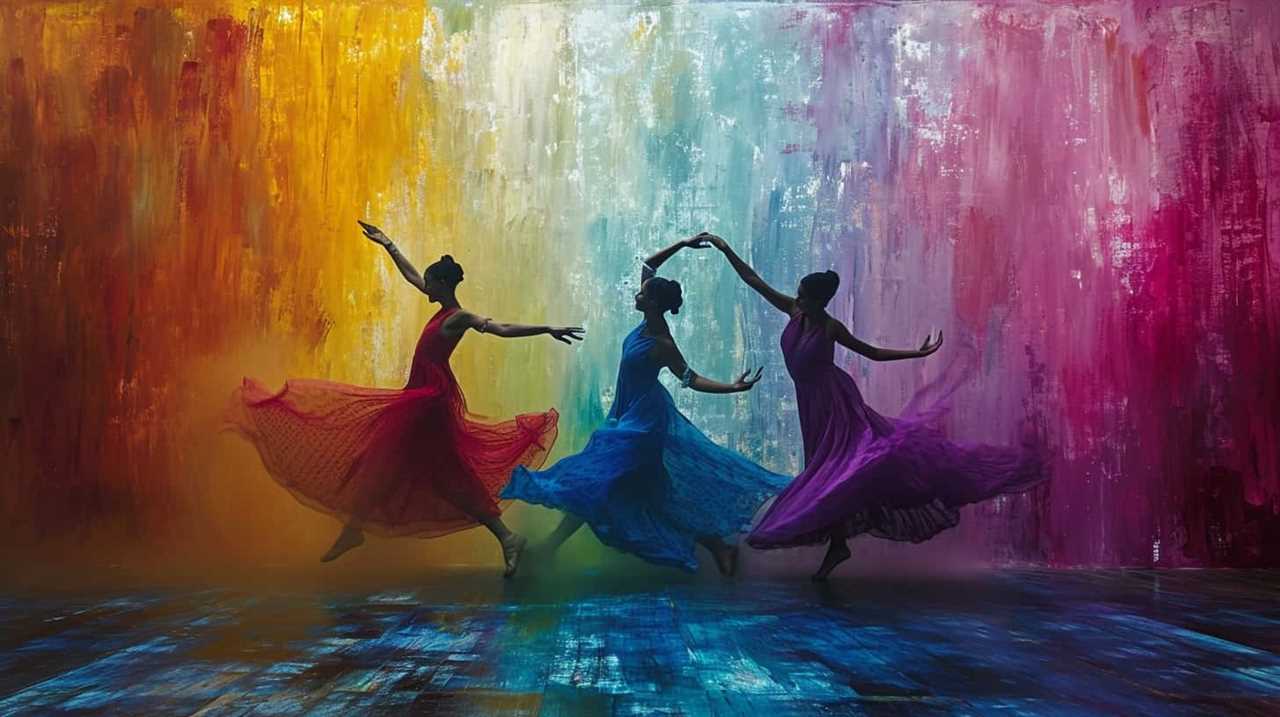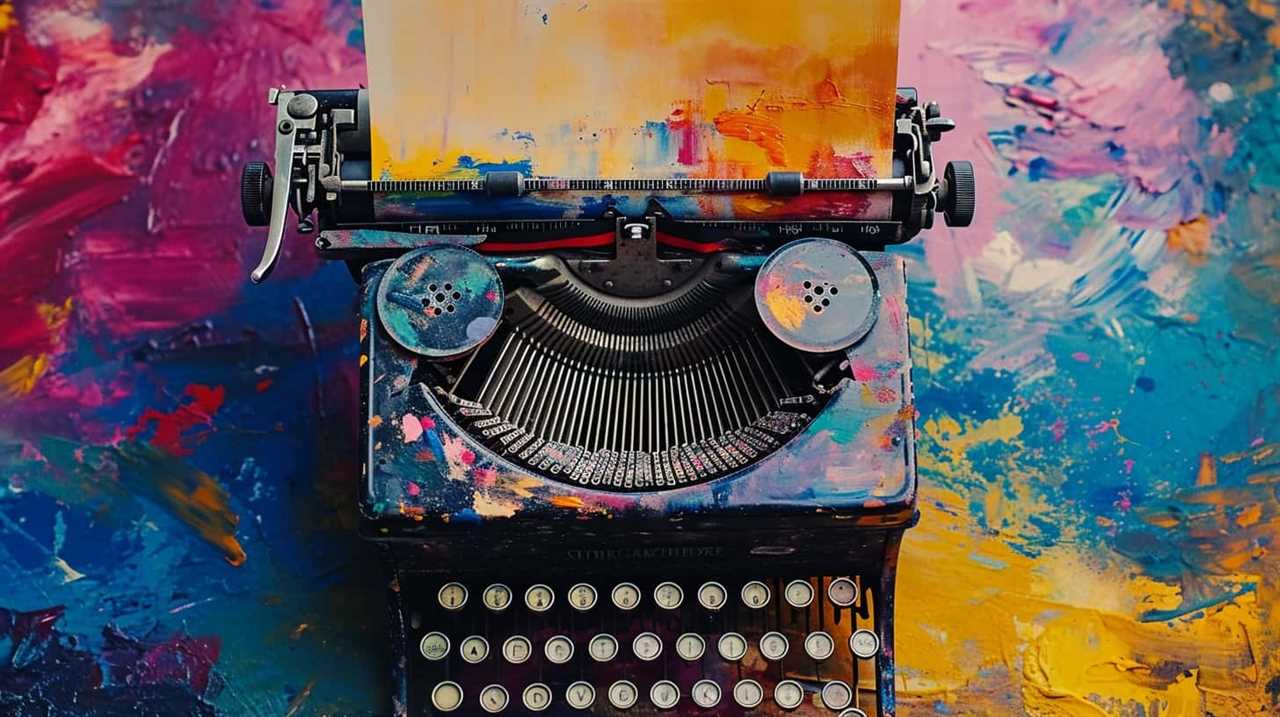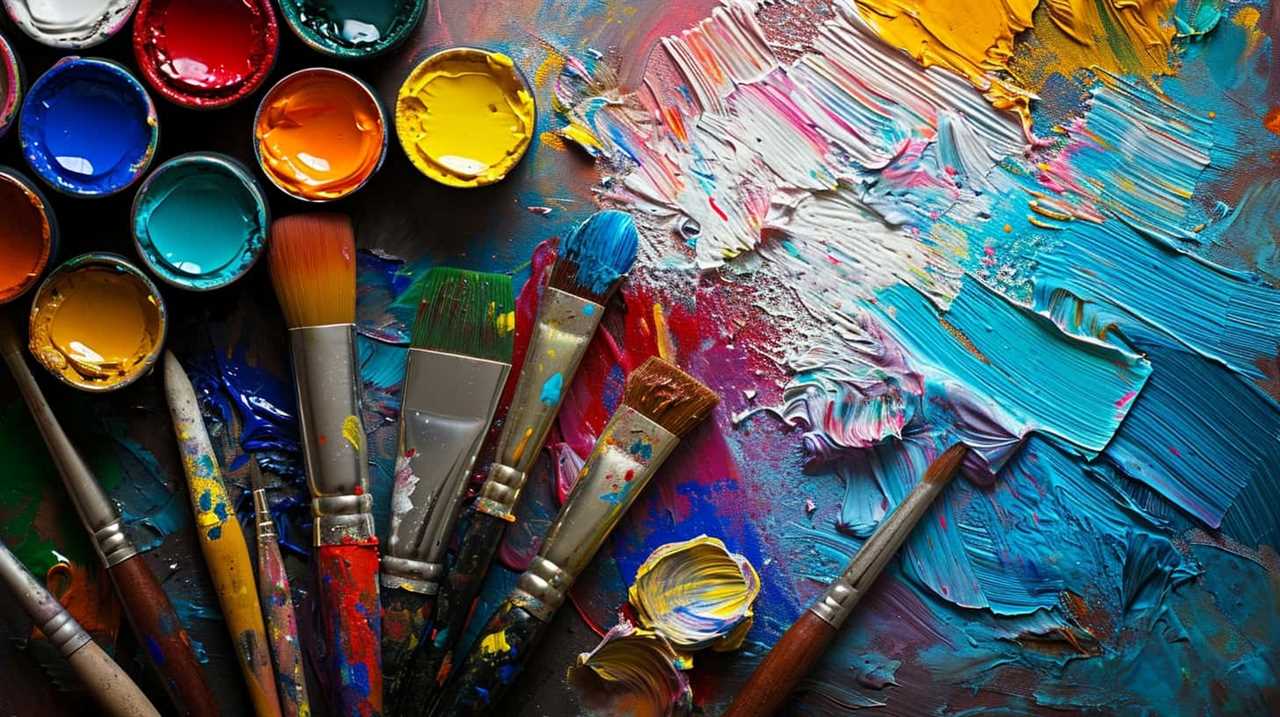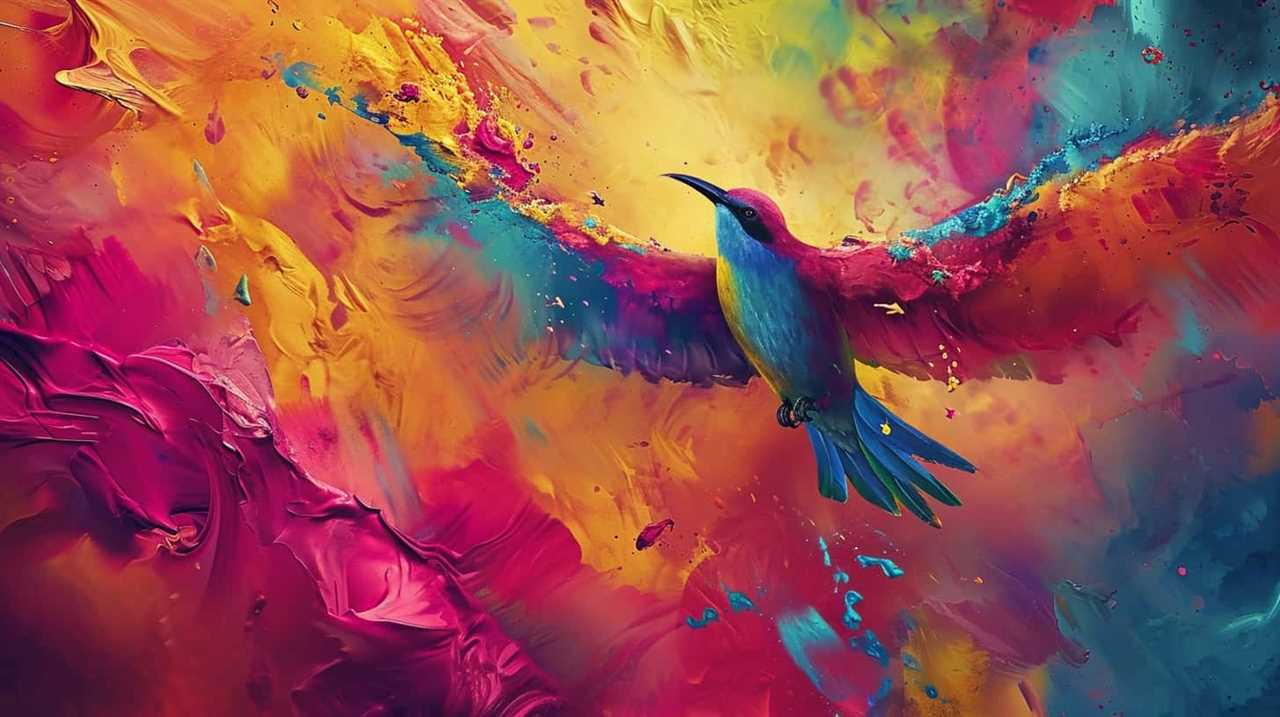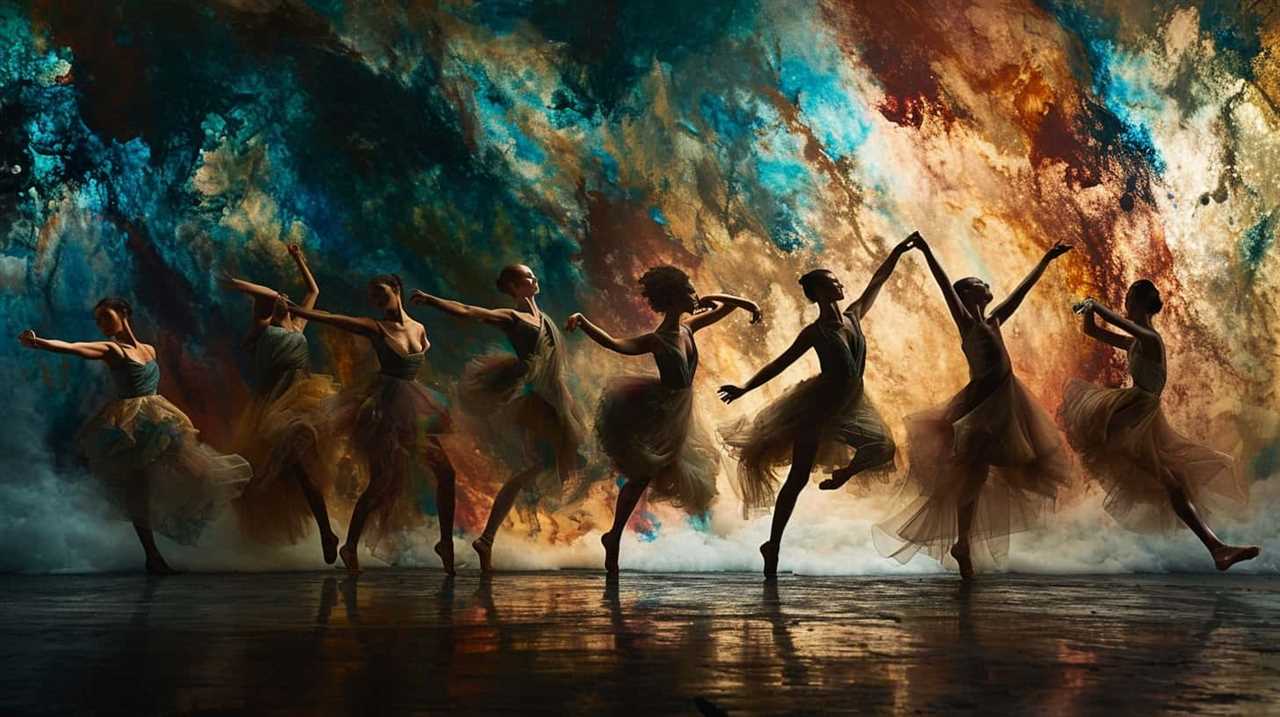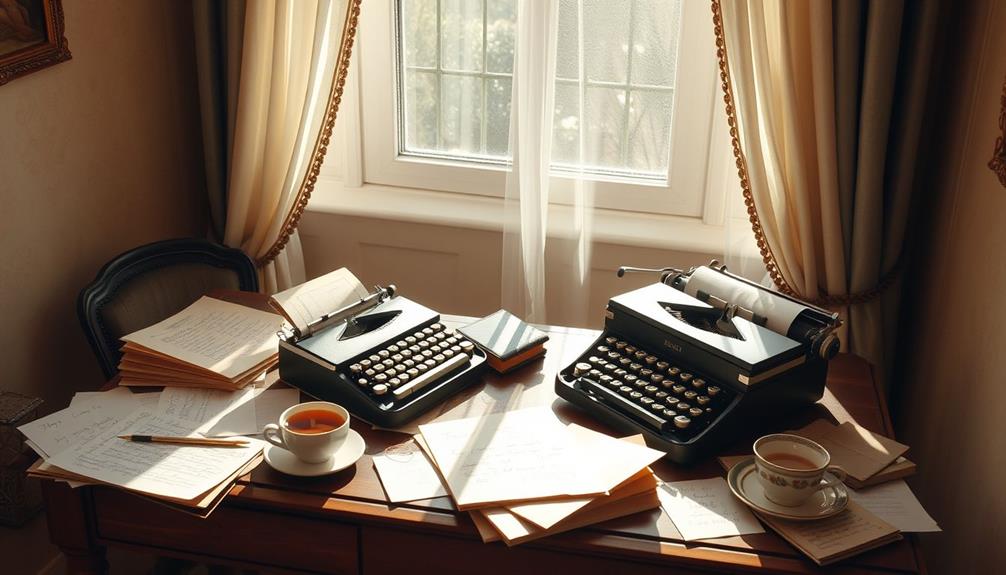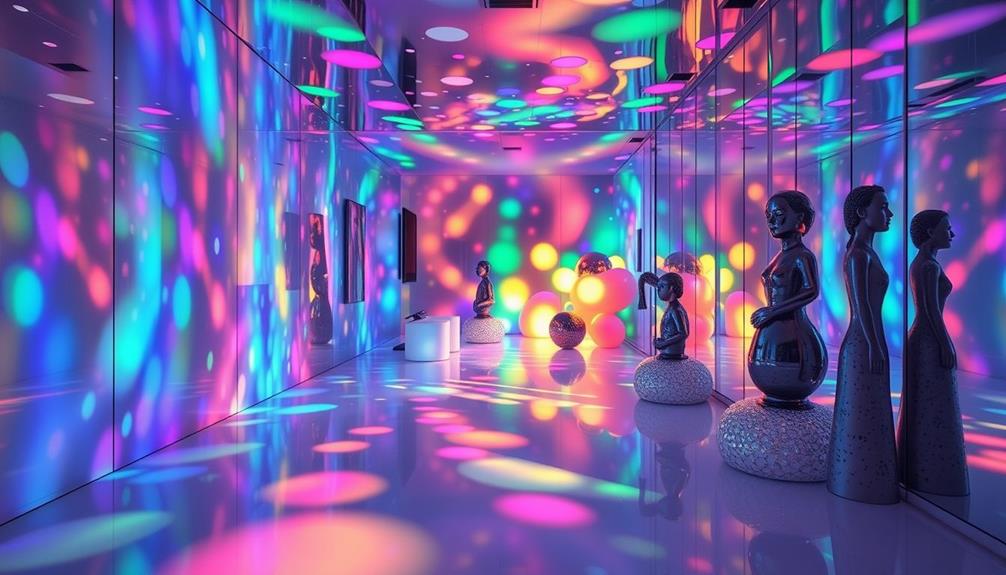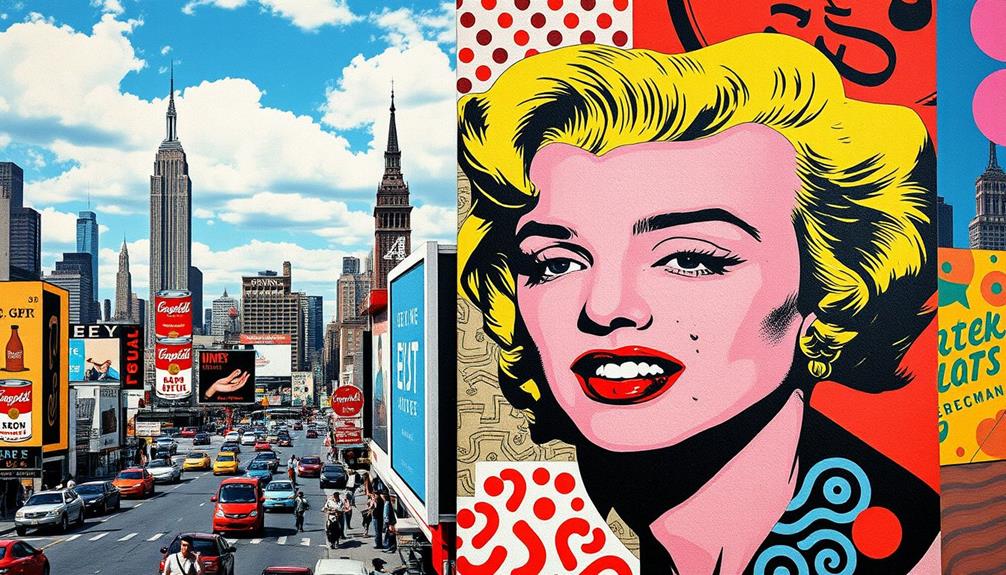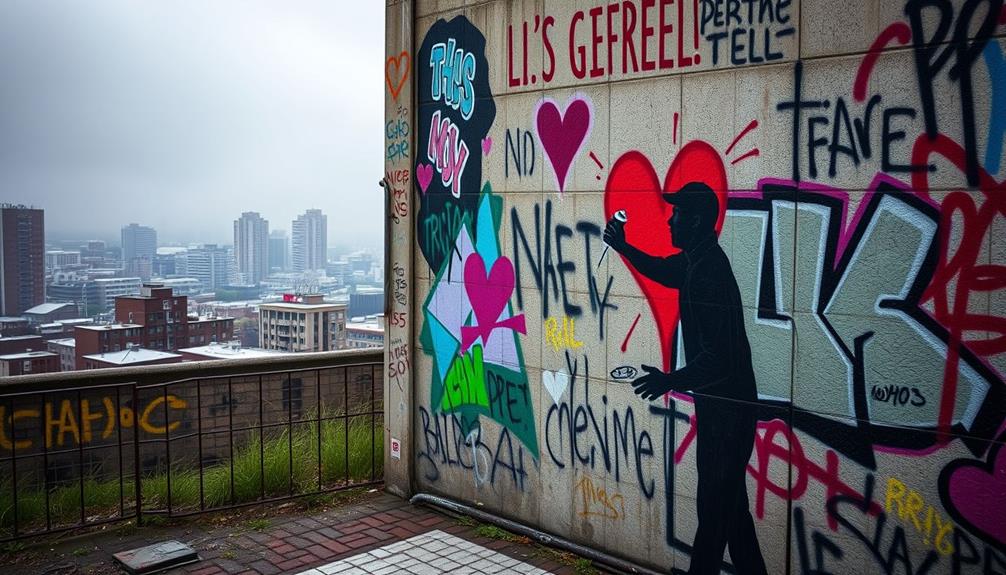Art is highly valued by respected creators as it mirrors society, enables deep self-expression, and inspires change.
Renowned creators assert that art matters because it possesses the power to forge emotional connections, transcending language barriers and uniting diverse individuals. It is a universal language that transcends borders and cultures, fostering understanding and empathy.
Moreover, art serves as a therapeutic outlet, promoting healing and personal growth. Its intrinsic ability to challenge societal norms and perceptions further highlights its importance.
Through art, we glimpse the beauty and aesthetics that surround us, elevating our senses and enriching our lives. Join us on this exploration of why art truly matters in the realm of renowned creators.
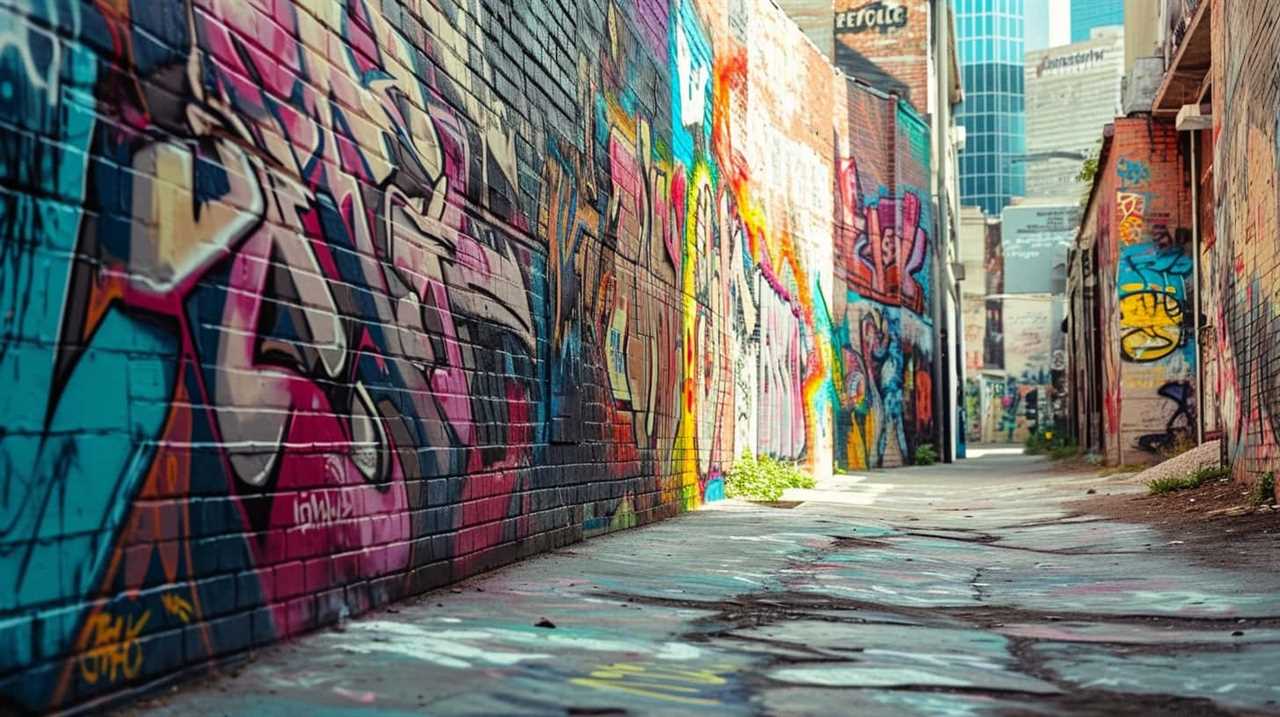
Key Takeaways
- Art serves as a reflection of society, capturing the values and ideals of different cultures and time periods.
- Art is a powerful tool for self-expression, allowing artists to explore their innermost thoughts and emotions without limitations.
- Art has the potential to inspire social progress and challenge the status quo, conveying powerful messages that resonate with audiences and ignite a desire for change.
- Art has a profound impact on individuals and society, influencing mental health, promoting personal growth, and sparking conversations about pressing issues.
Art as a Reflection of Society
Artists believe that art serves as a mirror, reflecting the intricacies and complexities of society. Through their creative expressions, artists are able to capture the essence of cultural values and beliefs, providing a window into the collective consciousness of a community. Art has always been a powerful platform for cultural exchange, allowing different societies to engage with one another and learn from their differences.
When we examine various art forms from different periods of history, we can see how they reflect the values and ideals of the societies in which they were created. For example, Renaissance art in Europe showcased the beauty of human anatomy and celebrated the achievements of the individual, mirroring the cultural shift towards humanism. In contrast, art from the Soviet Union during the Cold War era often depicted the strength of the proletariat and the triumph of communism, reflecting the prevailing political ideology of the time.
Art not only reflects cultural values, but it also acts as a platform for cultural exchange. When artists from different cultures come together, they bring their unique perspectives and experiences, creating a rich tapestry of ideas and influences. This exchange of artistic expression allows for a deeper understanding and appreciation of diverse cultures, fostering empathy, and breaking down barriers.
As we delve into the next section on ‘art as a means of self-expression’, it becomes clear that art not only reflects society but also serves as a medium for individuals to express their thoughts, emotions, and experiences.
![]()
Art as a Means of Self-Expression
Continuing from our exploration of art as a reflection of society, we now delve into the profound significance of art as a means of self-expression. Art has long been recognized as a powerful tool for self-discovery and the exploration of one’s innermost thoughts and emotions. Through various artistic mediums, individuals can communicate their unique perspectives, experiences, and identities, allowing for a deeper understanding of oneself and the world around them.
Artistic freedom plays a crucial role in this process of self-expression. It provides individuals with the liberty to express themselves authentically and without limitations. This freedom allows artists to push boundaries, challenge societal norms, and explore unconventional ideas. It is through this creative freedom that artists can uncover hidden aspects of their own identities and communicate them to the world.
To better understand the significance of art as a means of self-expression, let us consider the following table:
| Artistic Medium | Self-Expression |
|---|---|
| Painting | Visualizing emotions and thoughts through color and form |
| Poetry | Conveying complex emotions and personal experiences through language |
| Dance | Communicating stories and emotions through movement |
This table illustrates how different artistic mediums offer unique avenues for self-expression, each with its own distinct language and means of communication.
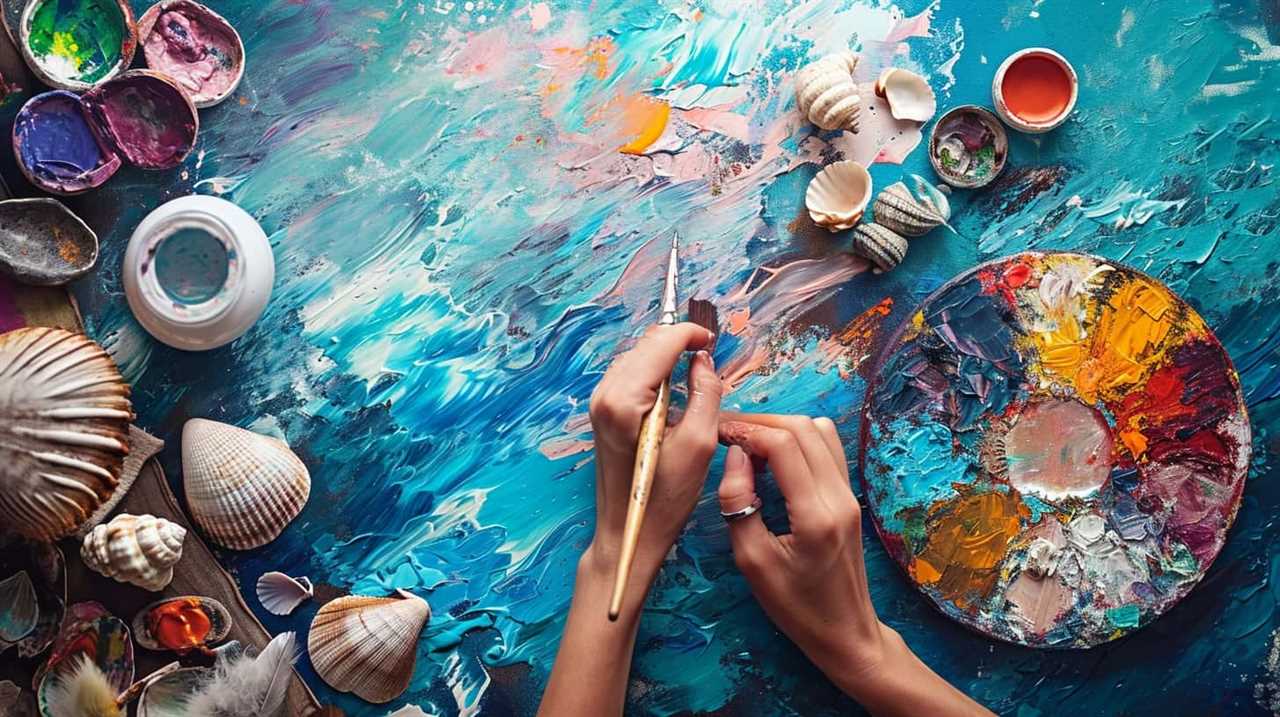
It is through self-expression that art becomes a catalyst for change. By sharing their personal truths, artists have the power to inspire, challenge, and provoke thought within society. In the next section, we will explore the transformative role of art as a catalyst for change.
Art as a Catalyst for Change
Art has the power to inspire social progress by challenging the status quo and sparking conversations about important issues.
Through artistic expression, creators can convey powerful messages that resonate with audiences and ignite a desire for change.
Art serves as a voice for those who may not have one, giving marginalized communities a platform to share their stories and advocate for justice.
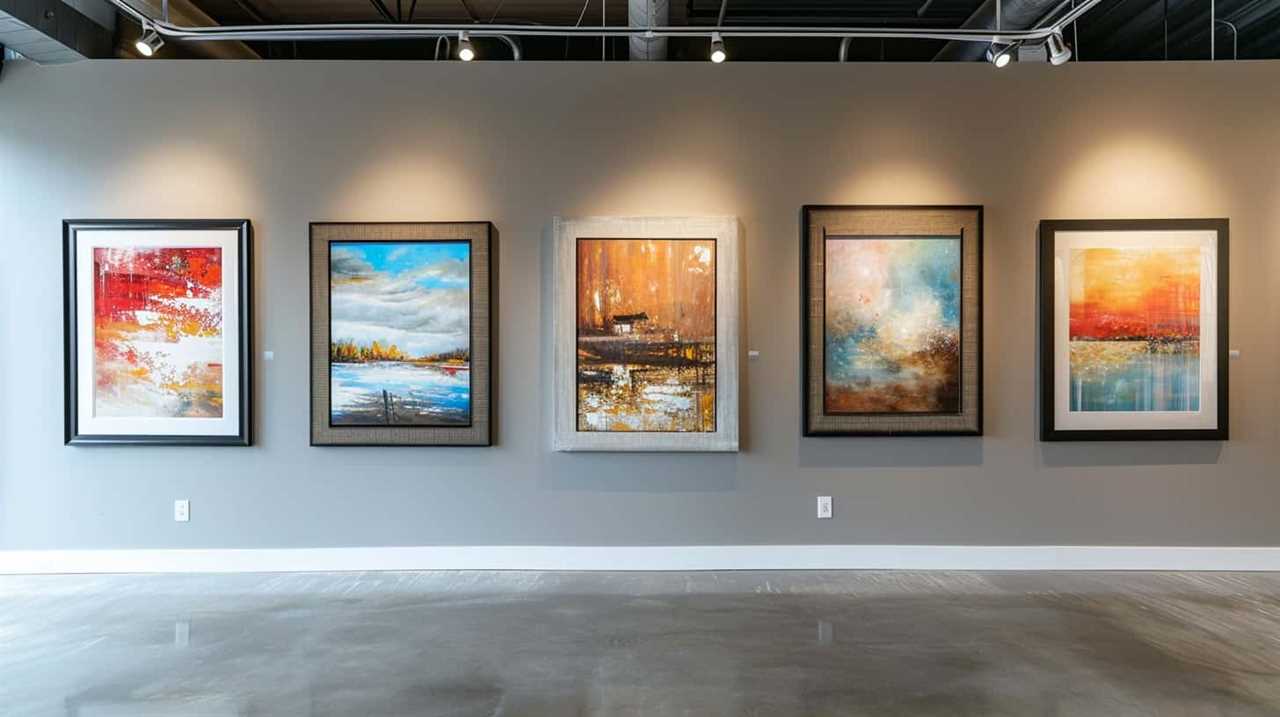
Art Inspiring Social Progress
One significant way that art can drive social progress and act as a catalyst for change is through its ability to bring people together and foster empathy and understanding. Art has the power to transcend boundaries and unite individuals from diverse backgrounds, creating a sense of community and shared humanity.
Through artistic expression, people can engage in conversations about important social issues, challenge existing norms, and advocate for change. Art and activism often go hand in hand, as artists use their creative platforms to raise awareness, provoke thought, and inspire action. Whether it’s through visual arts, music, dance, or theater, art has the potential to ignite social movements and drive meaningful change.
By fostering empathy and understanding, art encourages individuals to step outside their comfort zones and embrace new perspectives, ultimately leading to a more inclusive and progressive society.
Transitioning into the subsequent section about the impact of artistic expression, it’s important to explore how art has the ability to challenge societal norms and spark conversations about pressing issues.
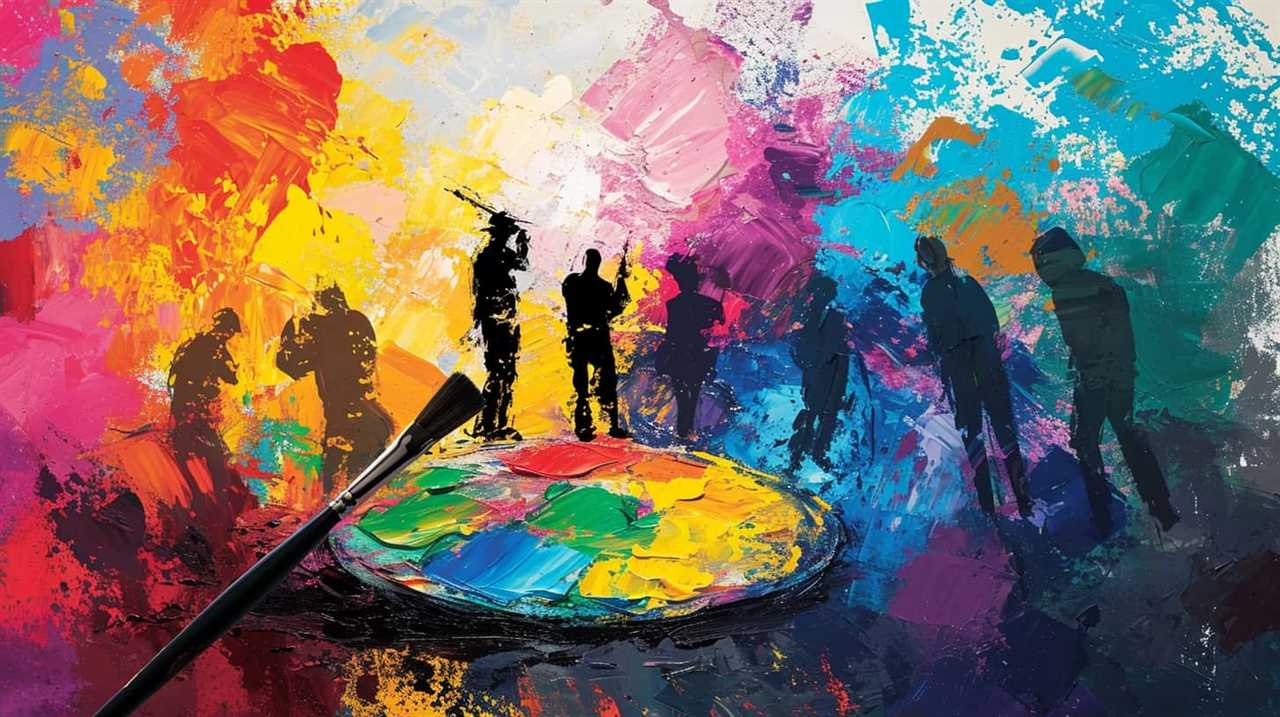
Impact of Artistic Expression
Through artistic expression, we can actively drive social progress and ignite change. Art has the power to impact our mental health and serve as a therapeutic tool, offering solace and healing. Art therapy, in particular, has gained recognition for its ability to improve emotional well-being, reduce stress, and promote self-expression. It provides an outlet for individuals to explore and process their emotions, leading to personal growth and transformation.
Artistic expression has the potential to challenge societal norms and raise awareness about important issues. It can serve as a catalyst for change by shedding light on social injustices, advocating for equality, and promoting empathy and understanding. Artists have the unique ability to capture the essence of human experiences and evoke powerful emotions, inspiring viewers to take action and create a better world.
| Impact on Mental Health | Art Therapy |
|---|---|
| Reduces stress | Promotes self-expression |
| Improves emotional well-being | Facilitates personal growth |
| Enhances self-esteem | Encourages healing and transformation |
| Provides an outlet for emotions | Raises awareness and promotes change |
Art as a Voice
As creators, we recognize the power of artistic expression to act as a catalyst for change, giving voice to marginalized communities and shining a light on important social issues. Art has the ability to transcend boundaries and communicate messages that may otherwise go unheard.
Here are three ways art serves as a voice and a platform for marginalized voices:
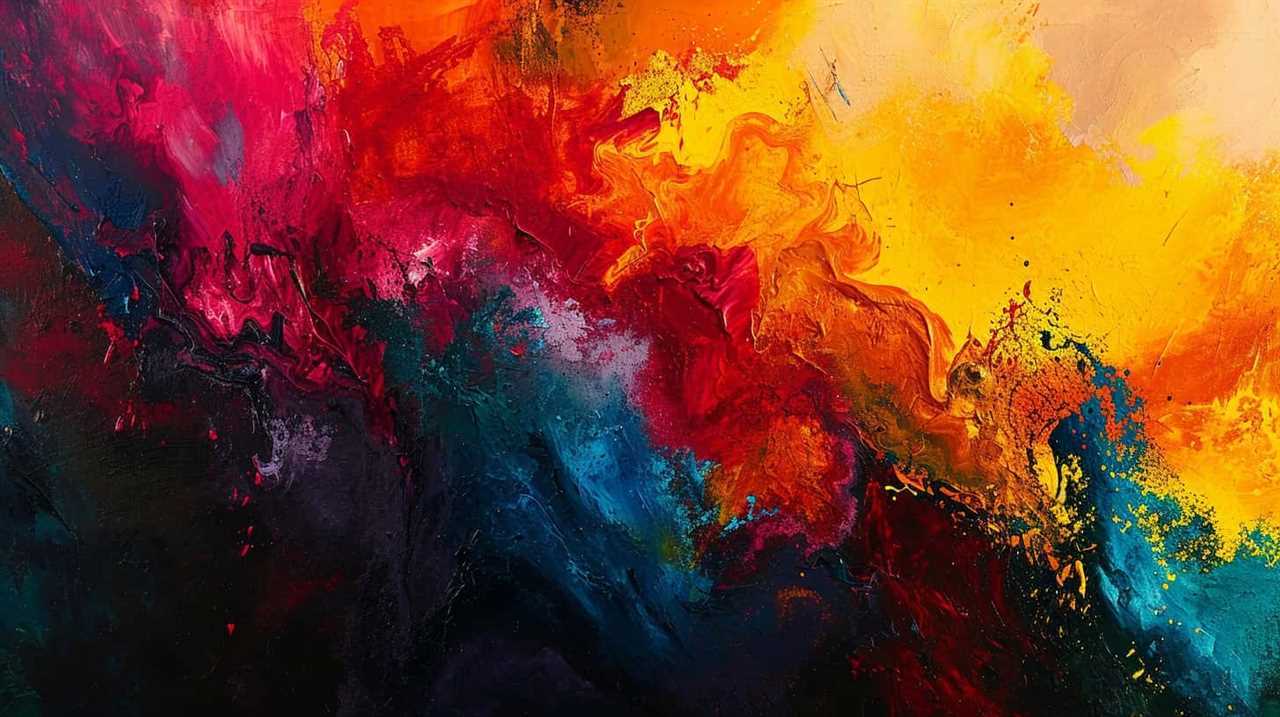
- Art as a form of activism: Artists have long used their creativity to advocate for social justice and challenge the status quo. Through their work, they raise awareness about pressing issues, provoke conversations, and inspire action.
- Art as a means of empowerment: By providing a platform for marginalized voices, art enables individuals and communities to reclaim their narratives and challenge dominant narratives. It allows them to express their experiences, perspectives, and emotions, fostering a sense of empowerment and agency.
- Art as a tool for empathy and understanding: Art has the power to foster empathy and bridge gaps between different communities. By sharing stories and experiences through artistic mediums, artists create opportunities for audiences to connect, understand, and relate to the lived experiences of others.
Art as a Source of Emotional Connection
Art has the power to forge emotional connections, allowing us to experience a range of feelings and connect with others on a deeper level. Through artistic expression, we can find solace, healing, and a sense of belonging. Artists have the unique ability to tap into the depths of human emotion and translate it into visual, auditory, or written form, creating a bridge between their inner world and the hearts of the audience.
Emotional healing is one of the most profound aspects of art. It serves as a form of therapy, helping individuals process and release their emotions. Whether it’s a cathartic painting, a soul-stirring melody, or a heartfelt poem, art has the capacity to touch our innermost selves and provide a sanctuary for emotional release. It allows us to confront our pain, celebrate our joy, and navigate the complexities of the human experience.
Artistic connection is another crucial element of emotional connection. When we engage with a piece of art that resonates with us, we feel a sense of kinship with the artist and with others who share our appreciation. This shared experience fosters a sense of community, empathy, and understanding. It reminds us that we are not alone in our emotions, and that our experiences are valid and significant.
To illustrate the power of art as a source of emotional connection, consider the following table:
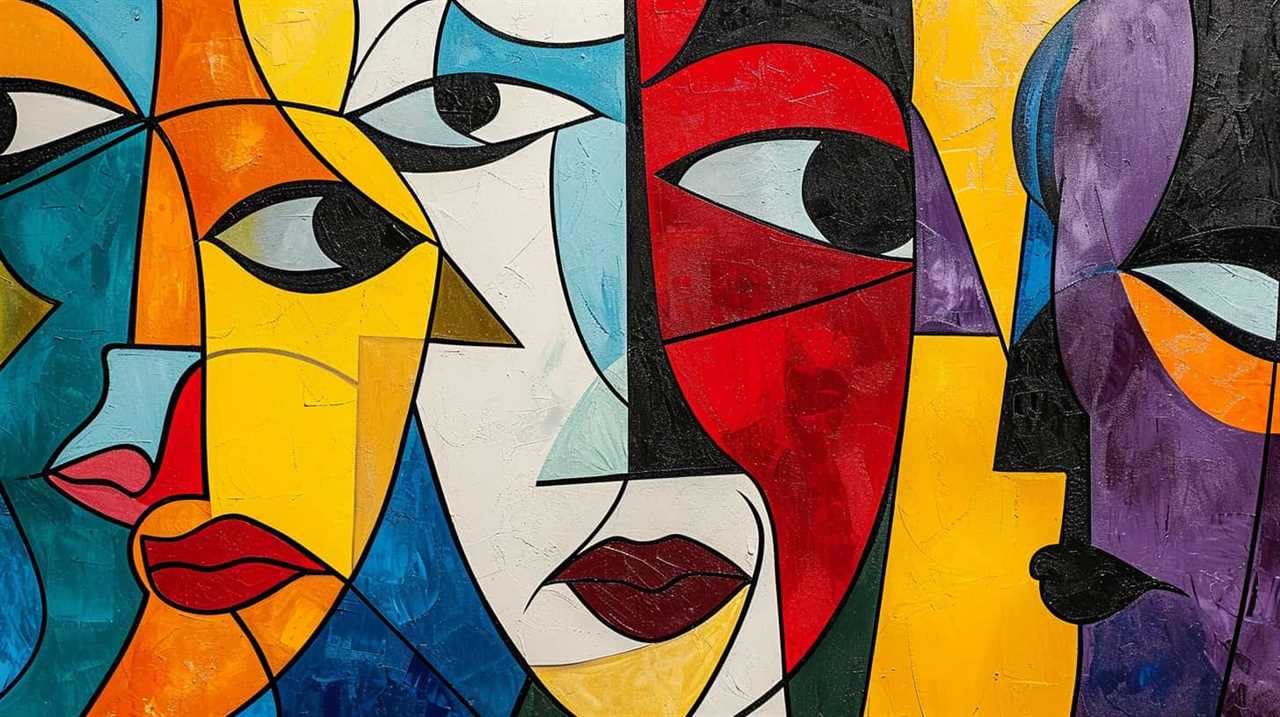
| Art Form | Emotions Invoked | Example |
|---|---|---|
| Painting | Serenity, melancholy | Vincent van Gogh’s "Starry Night" |
| Music | Joy, sadness | Ludwig van Beethoven’s Symphony No. 9 |
| Poetry | Love, longing | Maya Angelou’s "Still I Rise" |
| Dance | Passion, vulnerability | Martha Graham’s "Lamentation" |
These examples demonstrate how art can evoke a wide range of emotions, allowing us to connect with ourselves and with others who share our emotional responses. Art serves as a universal language that transcends barriers of language, culture, and personal experiences.
Art as a Universal Language
Art has the unique ability to connect diverse cultures by transcending language barriers and fostering understanding.
Through art, individuals can express their emotions and experiences in a way that’s universally relatable, allowing others to empathize and connect on a deeper level.
Additionally, art serves as a powerful tool in bridging communication barriers, as it provides a visual and tangible form of expression that can be understood and appreciated by people from different backgrounds.
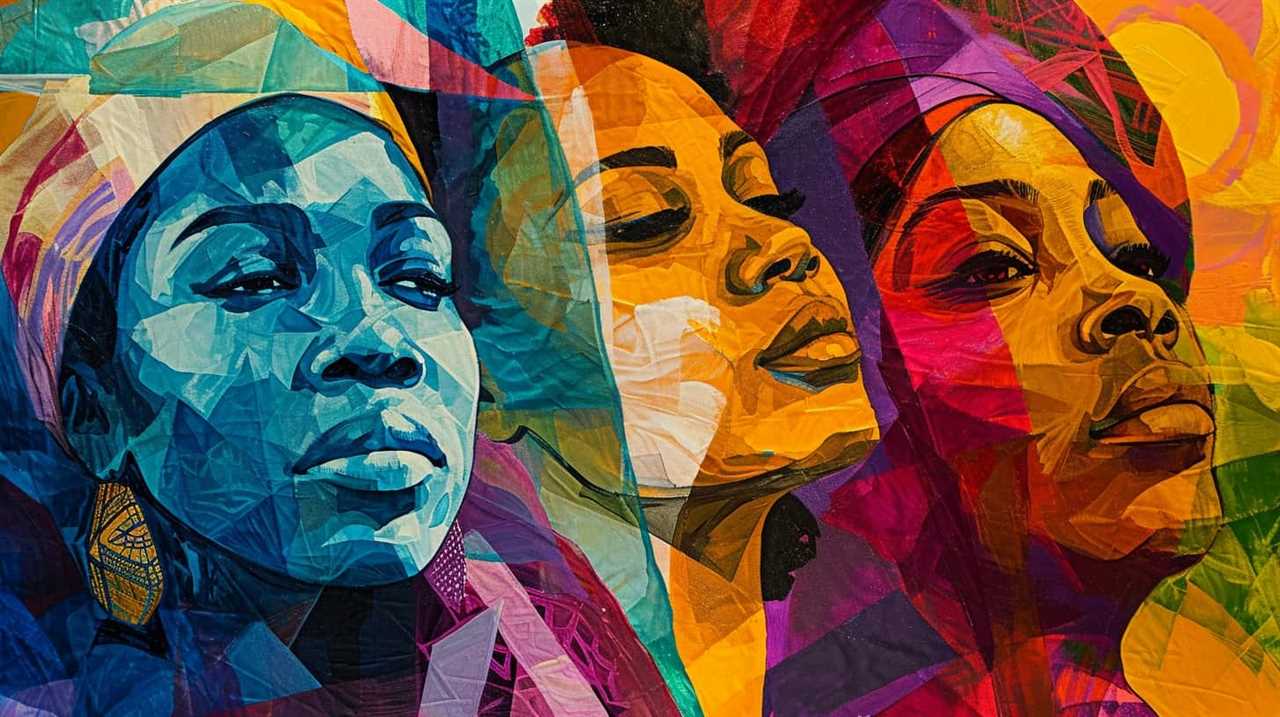
Connecting Diverse Cultures
We frequently witness the transformative power of art in connecting diverse cultures. Art has the ability to promote cultural understanding and foster cross-cultural dialogue in ways that words alone cannot.
Here are three reasons why art serves as a universal language:
- Visual storytelling: Art allows individuals from different cultures to share their stories, beliefs, and experiences through visual mediums. These visual narratives transcend language barriers and offer a unique perspective into diverse cultures.
- Emotion and empathy: Art has the remarkable ability to evoke emotions and create a sense of empathy among viewers. When we engage with art from different cultures, we can develop a deeper understanding and appreciation for the experiences and perspectives of others.
- Bridging differences: Art serves as a bridge between cultures, providing a platform for dialogue and exchange. It brings people together, encouraging collaboration and fostering connections that transcend cultural boundaries.
Through art, we can celebrate diversity, build bridges between cultures, and promote a more inclusive and interconnected world.
Expressing Emotions and Experiences
From our personal experiences and observations, renowned creators have consistently emphasized the significant role art plays in expressing a wide range of emotions and experiences, making it a truly universal language. Art has the power to convey vulnerability in a way that words often fail to capture. It allows individuals to express their deepest fears, insecurities, and struggles, creating a space for empathy and understanding.

Additionally, art has the ability to capture memories and preserve them in a tangible form. Whether it’s a painting, a photograph, or a piece of music, art has the unique ability to evoke emotions and transport us back to a specific moment in time. By expressing vulnerability and capturing memories, art provides a means for individuals to connect and relate to one another on a profound level.
This ability to communicate on a deeper level sets the foundation for art to bridge communication barriers and foster understanding between different cultures and communities.
Bridging Communication Barriers
Throughout history, renowned creators have utilized art as a means of bridging communication barriers and fostering understanding between different cultures and communities. Art has the power to transcend language and reach people on a universal level, enabling individuals from diverse backgrounds to connect and engage in meaningful dialogue.
Here are three ways in which art promotes cultural exchange and overcomes language barriers:
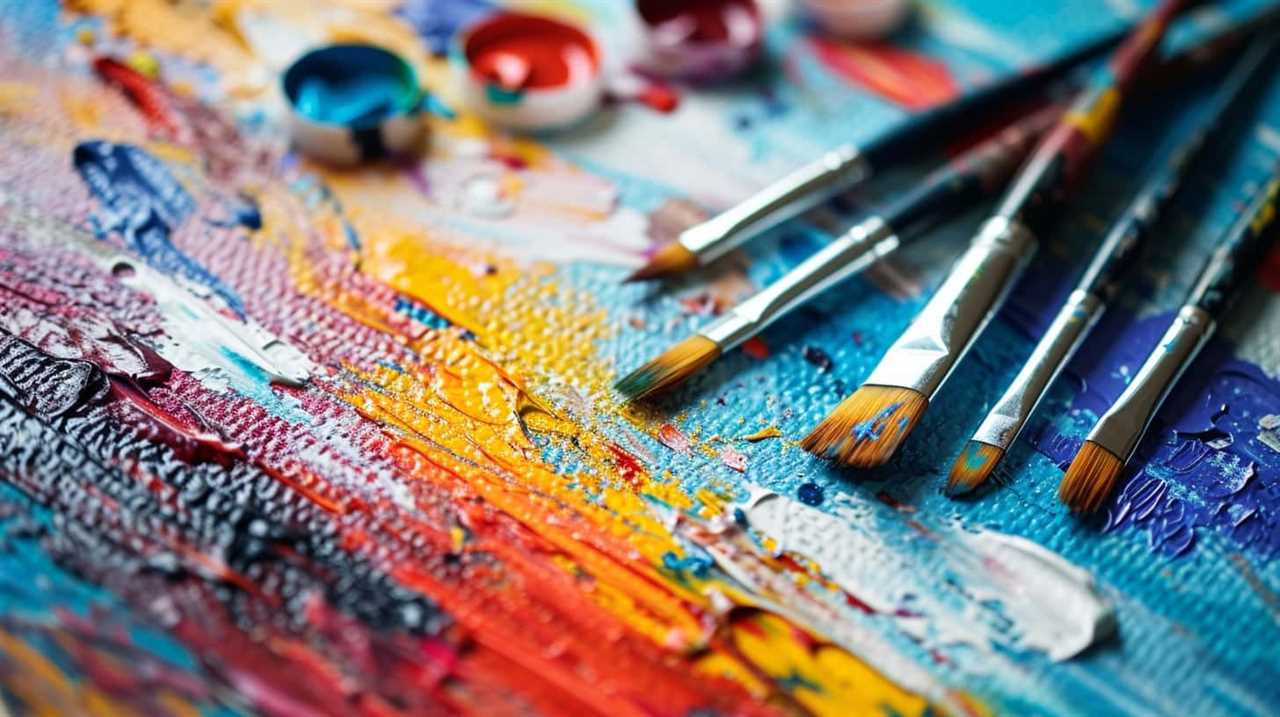
- Visual storytelling: Art can convey narratives and emotions without the need for words. Through paintings, sculptures, and other visual mediums, artists can communicate ideas and experiences that resonate with people across languages.
- Symbolism and metaphor: By employing symbols and metaphors, artists can convey complex concepts and cultural nuances that may be lost in translation. These visual cues become a shared language that allows for cross-cultural understanding.
- Collaborative projects: Art has the capacity to bring people together, encouraging collaboration and fostering a sense of community. By engaging in joint creative endeavors, individuals from different linguistic backgrounds can communicate and learn from one another, building connections and promoting cultural exchange.
Art as a Vehicle for Cultural Preservation
Using art as a vehicle for cultural preservation involves actively engaging with and celebrating our diverse heritage. Cultural heritage preservation is crucial for maintaining a sense of identity and connection to our roots. Art has long been recognized as a powerful tool for documenting and preserving culture. Through various artistic mediums such as painting, sculpture, music, and literature, artists capture the essence of a particular time, place, and people. They create visual and auditory narratives that serve as a testament to the richness and uniqueness of our cultural heritage.
Art, in its ability to transcend language barriers, serves as a universal language that can be understood and appreciated by people from different backgrounds. It allows us to explore and understand cultures that may be unfamiliar to us, fostering cross-cultural understanding and empathy. By preserving cultural traditions and practices through art, we ensure that future generations have access to their history and heritage.
Moreover, art as a documentation of cultural heritage can help revive and revitalize traditions that are at risk of being lost or forgotten. Artists can use their creativity and skills to breathe new life into ancient customs, ensuring that they continue to be practiced and appreciated.
In conclusion, art plays a vital role in the preservation of cultural heritage. It serves as a bridge between the past and the present, allowing us to celebrate our diverse heritage and pass it on to future generations.
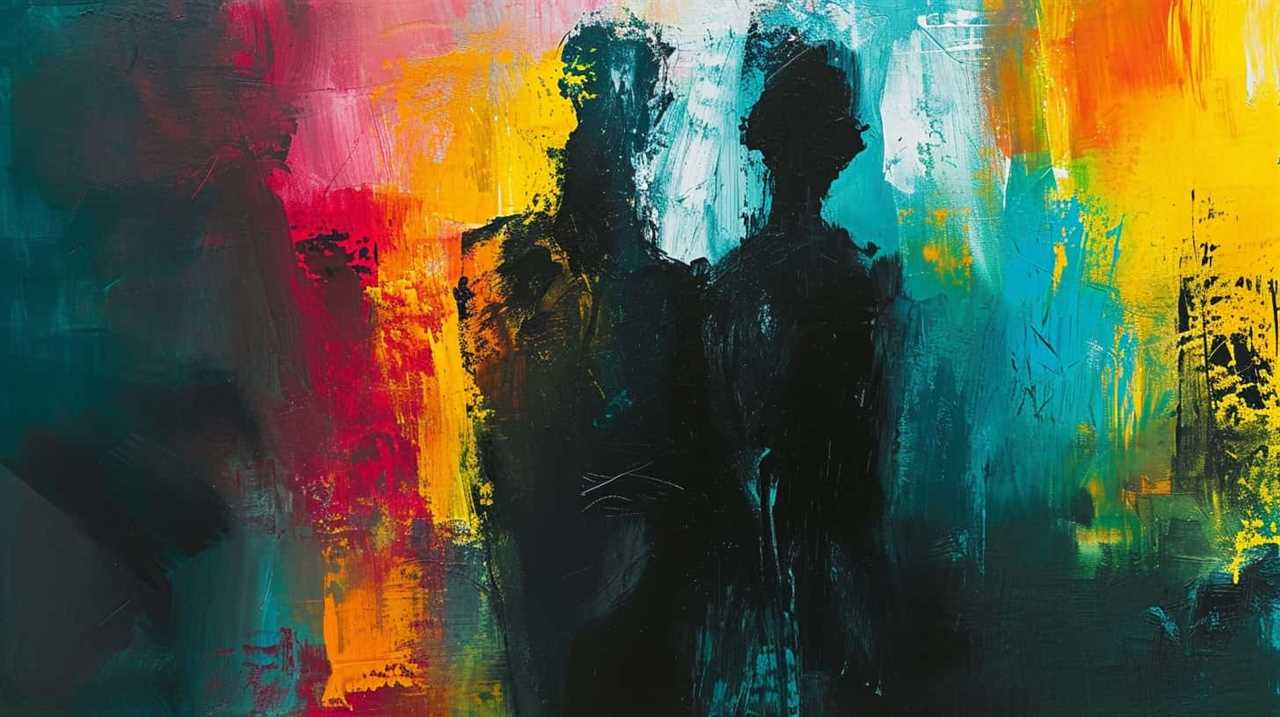
Transitioning into the next section, art not only preserves culture but also serves as a source of inspiration for innovation and creativity.
Art as a Source of Inspiration
Art ignites creative sparks within us, serving as a catalyst for imaginative exploration. When we engage with various forms of art, whether it be visual, musical, or literary, we’re exposed to new ideas, perspectives, and emotions.
This exposure fuels our own creativity, inspiring us to push boundaries, think outside the box, and create something truly unique.
Art Ignites Creative Sparks
As creators, we’re constantly inspired by the way art ignites creative sparks within us. It’s through the act of engaging with art that we find ourselves filled with a renewed sense of creative inspiration.
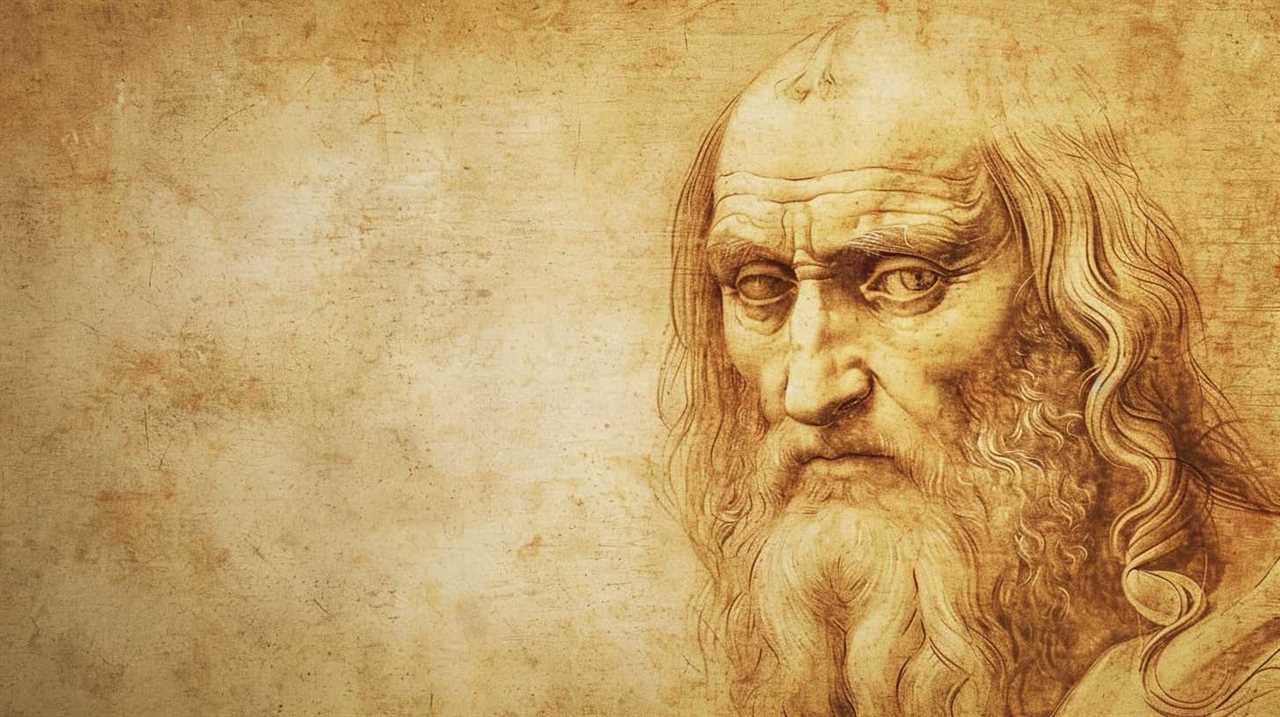
Artistic innovation thrives when we’re exposed to a diverse range of artistic expressions. Here are three ways in which art ignites creative sparks:
- Visual stimulation: The vibrant colors, intricate details, and unique perspectives found in art captivate our senses and awaken our imagination.
- Emotional resonance: Art has the power to evoke a wide range of emotions within us, from joy and awe to sadness and introspection. These emotional responses can fuel our creativity and inspire new ideas.
- Cross-disciplinary connections: Art often transcends boundaries and incorporates elements from various disciplines. This interdisciplinary approach sparks our curiosity and encourages us to explore new possibilities in our own creative endeavors.
Art ignites creative sparks by stimulating our senses, evoking emotions, and fostering interdisciplinary connections.
This foundation of inspiration propels us into the next section, where we’ll explore how art fuels imaginative exploration.
Art Fuels Imaginative Exploration
When exploring the role of art in fueling imaginative exploration, we find that it serves as a catalyst for creative inspiration. Imagination and innovation go hand in hand, and art provides the perfect platform for artists to explore new ideas and concepts. Through artistic exploration and discovery, creators are able to push the boundaries of what’s known and venture into uncharted territories.
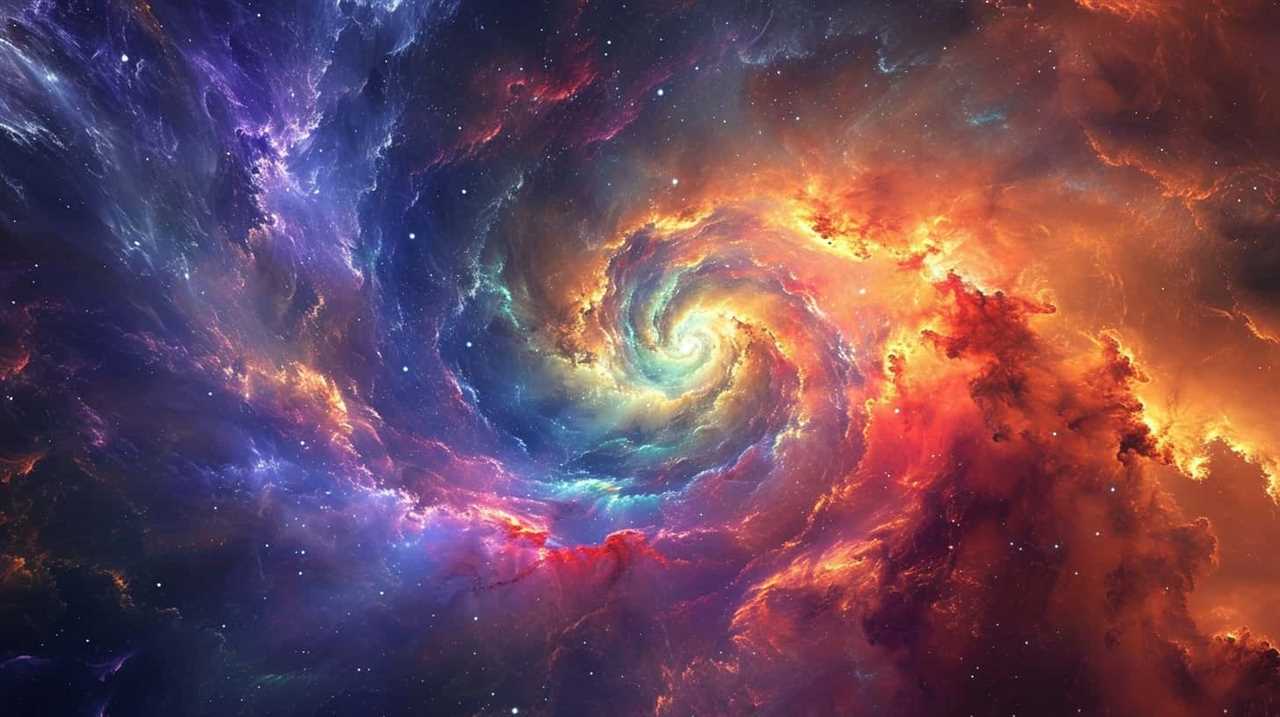
Artistic expression allows for the manifestation of abstract thoughts and emotions, giving them a tangible form that can be shared with others. Artists use their creations to transport viewers to different worlds, sparking their imagination and encouraging them to think outside the box. This process of imaginative exploration not only inspires individual artists but also fosters a culture of innovation and creativity within society.
As we delve deeper into the transformative power of art, we begin to understand its capacity to captivate and inspire, making it an essential ingredient in the creative process.
In the subsequent section, we’ll delve into another facet of art’s significance: its role as a form of storytelling.
Art as a Form of Storytelling
We frequently find ourselves captivated by the way stories are told through the medium of art. Art, in its various forms, serves as a powerful tool for communication and cultural expression. It allows artists to convey narratives, emotions, and ideas that resonate with audiences on a deep and meaningful level.
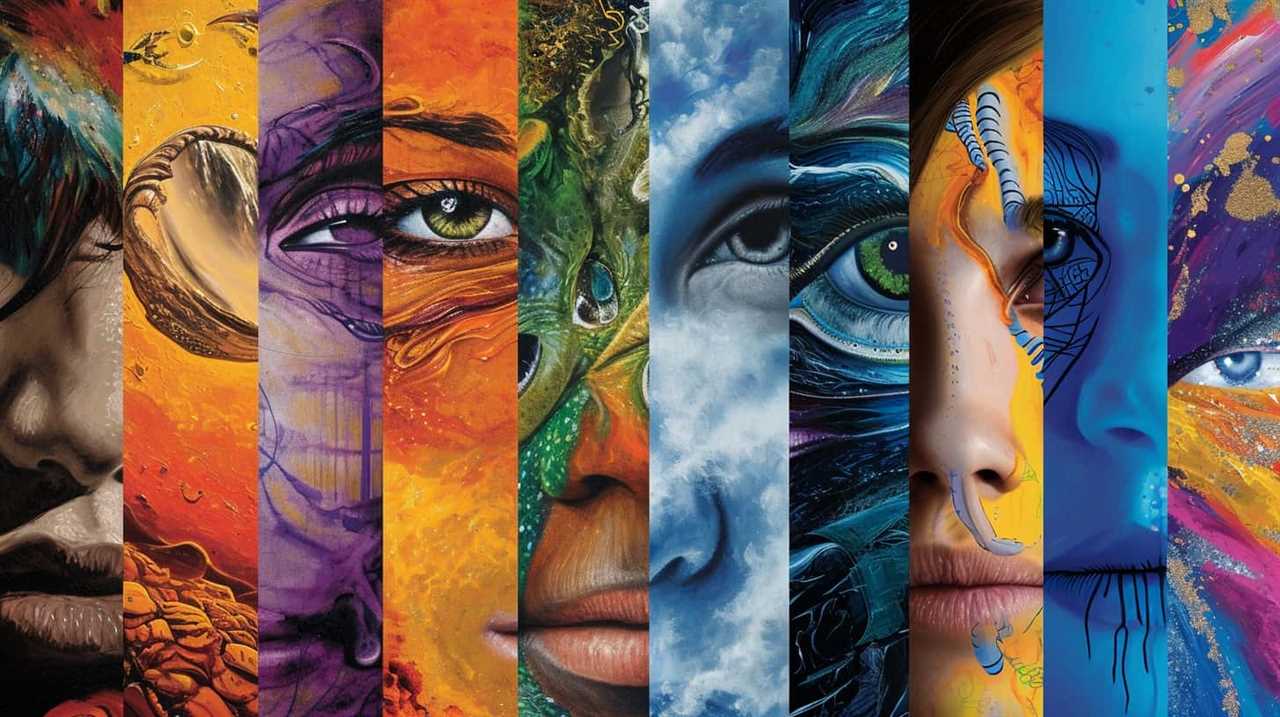
Here are three reasons why art as a form of storytelling holds such significance:
- Universal language: Art has the ability to transcend barriers of language, culture, and time. It speaks to our shared human experiences and emotions, allowing us to connect with stories from different corners of the world. Whether it’s a painting, a sculpture, or a film, art has the power to communicate complex ideas and narratives in a way that’s accessible to all.
- Emotional resonance: Art has a unique ability to evoke emotions within us. Through the use of colors, composition, and symbolism, artists can create visual narratives that elicit a wide range of feelings. These emotional responses not only engage us as viewers but also help us to empathize with the stories being told.
- Preservation of history and culture: Art serves as a mode of cultural expression, providing a glimpse into the history, traditions, and beliefs of different societies. From ancient cave paintings to contemporary installations, art acts as a record of our collective heritage. It allows us to preserve and celebrate cultural diversity, ensuring that these stories aren’t forgotten.
Art, as a form of storytelling, goes beyond mere entertainment. It has the power to educate, inspire, and foster a sense of connection among individuals. Through its ability to communicate and express cultural narratives, art enriches our understanding of the world and our place in it.
Art as a Tool for Social Commentary
Art plays a crucial role in society by serving as a tool for social commentary. Through various forms such as visual arts, literature, music, and film, artists have the power to challenge societal norms, expose injustices, and ignite conversations about pressing issues. Art has long been recognized as a political tool, capable of influencing public opinion and mobilizing communities towards change.
One way art serves as a tool for social commentary is by providing a platform for marginalized voices. Artists from marginalized communities often use their work to shed light on their experiences and bring attention to social inequalities. By amplifying these voices, art can challenge dominant narratives and foster empathy and understanding among diverse audiences.
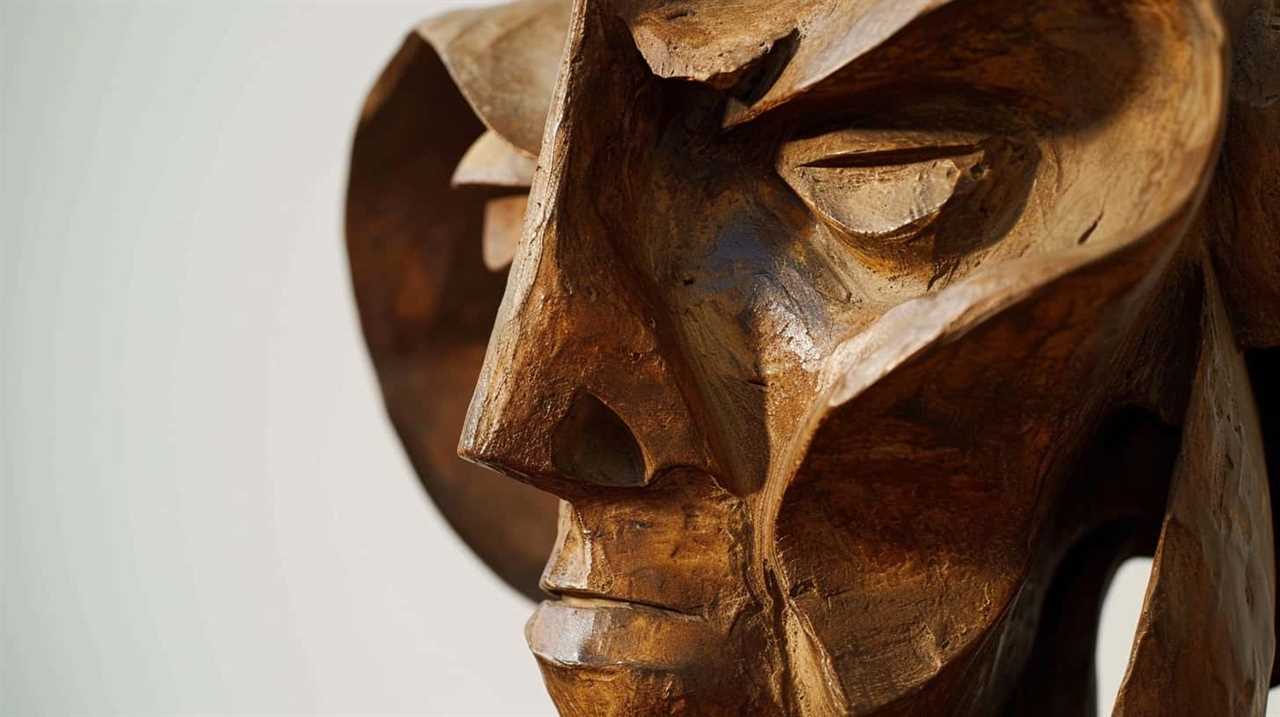
To illustrate the power of art as a political tool and platform for marginalized voices, let’s take a look at the following table:
| Artist | Artwork | Social Commentary |
|---|---|---|
| Frida Kahlo | "The Two Fridas" | Explores themes of identity, duality, and the complexities of being a woman in a patriarchal society |
| Ai Weiwei | "Dropping a Han Dynasty Urn" | Criticizes the destruction of cultural heritage and challenges the authority of the Chinese government |
| Banksy | Various graffiti artworks | Addresses political and social issues such as war, capitalism, and surveillance |
| Kara Walker | "A Subtlety" | Examines the history of slavery and the exploitation of Black bodies in the sugar industry |
These artists and their works demonstrate how art can serve as a powerful tool for social commentary, sparking conversations and provoking critical thinking. By challenging the status quo, art has the capacity to inspire change and contribute to a more just and equitable society.
Transitioning into the subsequent section about ‘art as a medium for healing and therapy’, it is worth exploring how art can also provide solace and comfort in times of emotional distress.
Art as a Medium for Healing and Therapy
How can art serve as a medium for healing and therapy?
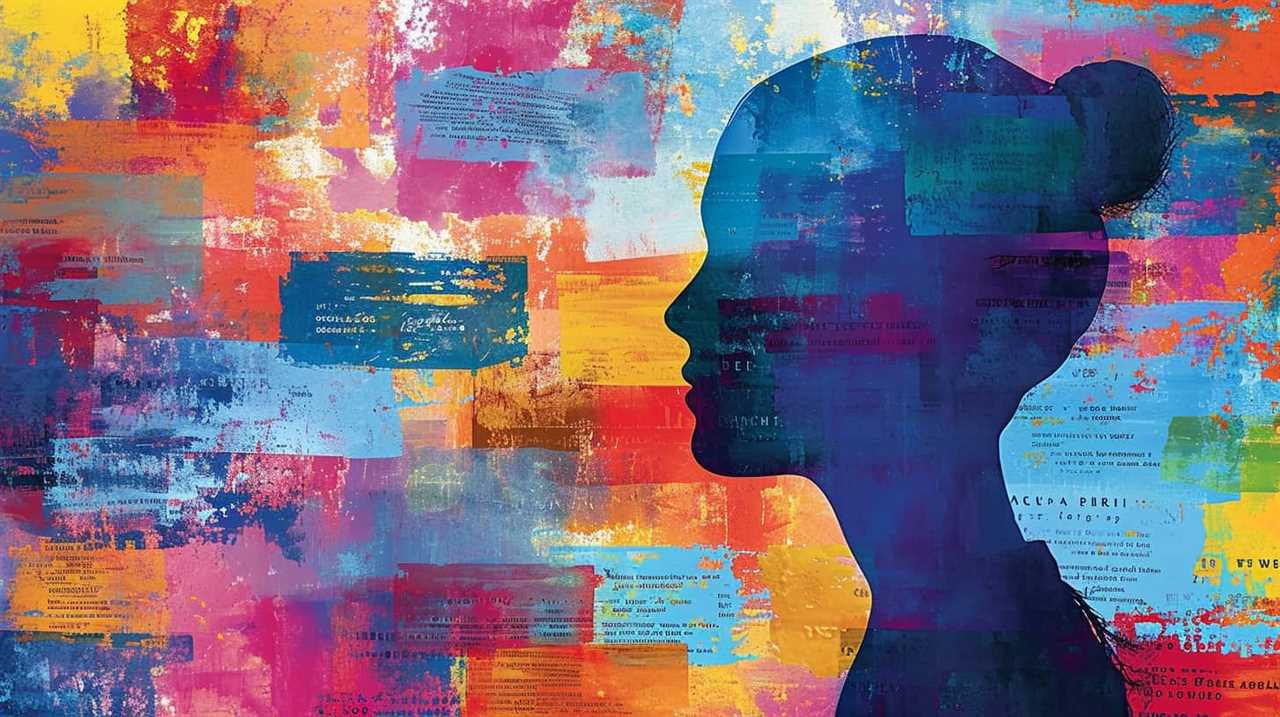
Art has long been recognized as a powerful tool for healing and therapy. Through creative expression, individuals can tap into their emotions, explore their inner world, and find solace in the process. Therapeutic artwork allows individuals to externalize their thoughts and feelings, providing a tangible representation of their experiences. This form of expression can be especially beneficial for those who struggle to verbalize their emotions or trauma.
Here are three ways in which art can facilitate healing through creativity:
- Emotional release: Creating art can serve as a cathartic outlet for emotions that may be difficult to express verbally. By channeling their feelings into their artwork, individuals can release pent-up emotions, providing a sense of relief and release.
- Self-reflection and insight: Engaging in artistic expression allows individuals to delve into their subconscious mind and gain insight into their thoughts, feelings, and experiences. Through the process of creating art, individuals can uncover hidden emotions and gain a deeper understanding of themselves.
- Empowerment and control: The act of creating art offers individuals a sense of control over their own narrative. It allows them to make choices, take risks, and assert their autonomy. This sense of empowerment can be particularly valuable for individuals who’ve experienced trauma or loss, as it helps them regain a sense of agency in their lives.
Art as a Channel for Personal Growth
Engaging in artistic expression enables us to tap into our inner potential and cultivate personal growth. Art has the power to facilitate personal development and self-discovery in profound ways. Through the creative process, we’re able to explore our thoughts, emotions, and experiences, gaining a deeper understanding of ourselves and the world around us.
Art provides a unique platform for self-expression, allowing us to communicate our innermost thoughts and feelings without limitations or judgment. It encourages us to delve into the depths of our imagination and push the boundaries of our creativity. As we engage in artistic endeavors, we’re challenged to confront our fears, embrace vulnerability, and take risks. These experiences foster personal growth by expanding our comfort zones and encouraging us to step outside of our perceived limitations.
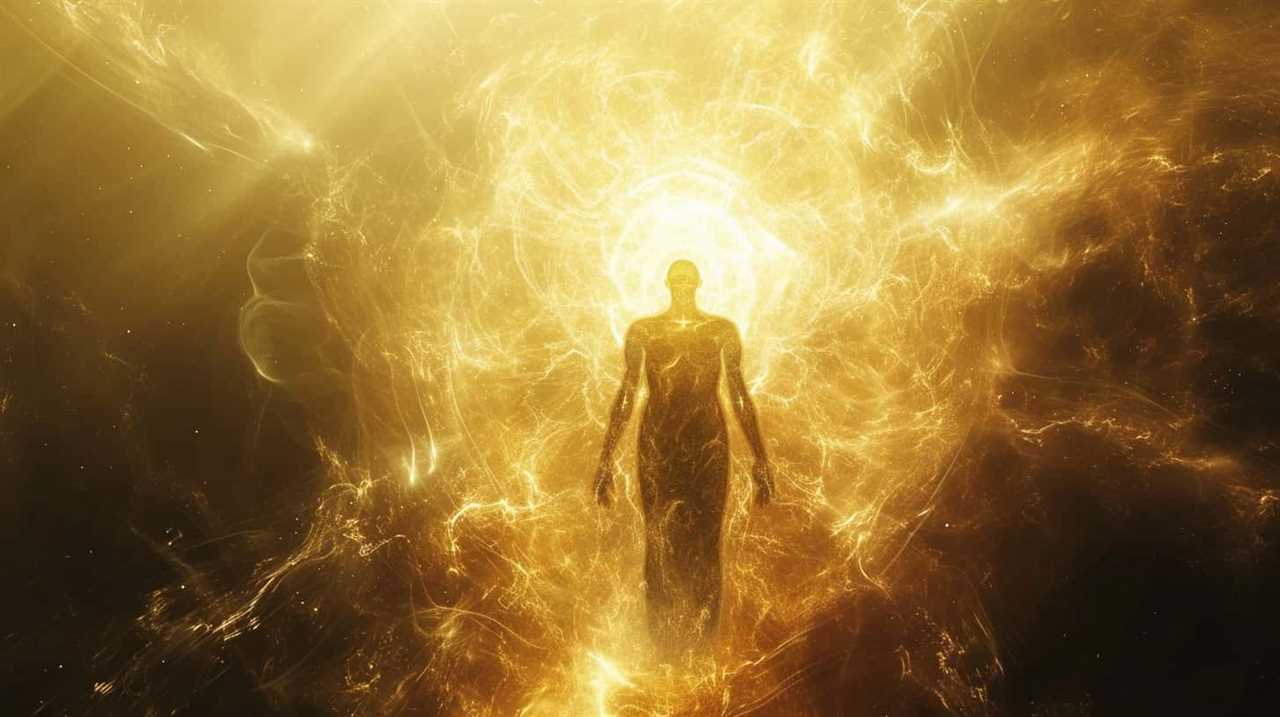
Moreover, art serves as a mirror, reflecting our innermost desires, fears, and aspirations. Through the creation and observation of art, we’re able to gain insights into our unconscious mind, revealing aspects of ourselves that may have otherwise remained hidden. This process of self-discovery allows us to develop a greater sense of self-awareness and authenticity.
In addition, art fosters personal growth by providing a sense of purpose and fulfillment. Engaging in creative activities allows us to tap into our passions and cultivate a sense of meaning in our lives. It provides us with a sense of accomplishment and satisfaction, boosting our self-esteem and confidence.
Art as a Source of Beauty and Aesthetics
The appreciation of beauty and aesthetics in art is a fundamental aspect of our collective experience. It’s through art that we find inspiration and are able to connect with the world around us. Art has the power to captivate our senses and evoke emotions, allowing us to experience beauty in its purest form.
Art as a source of inspiration:
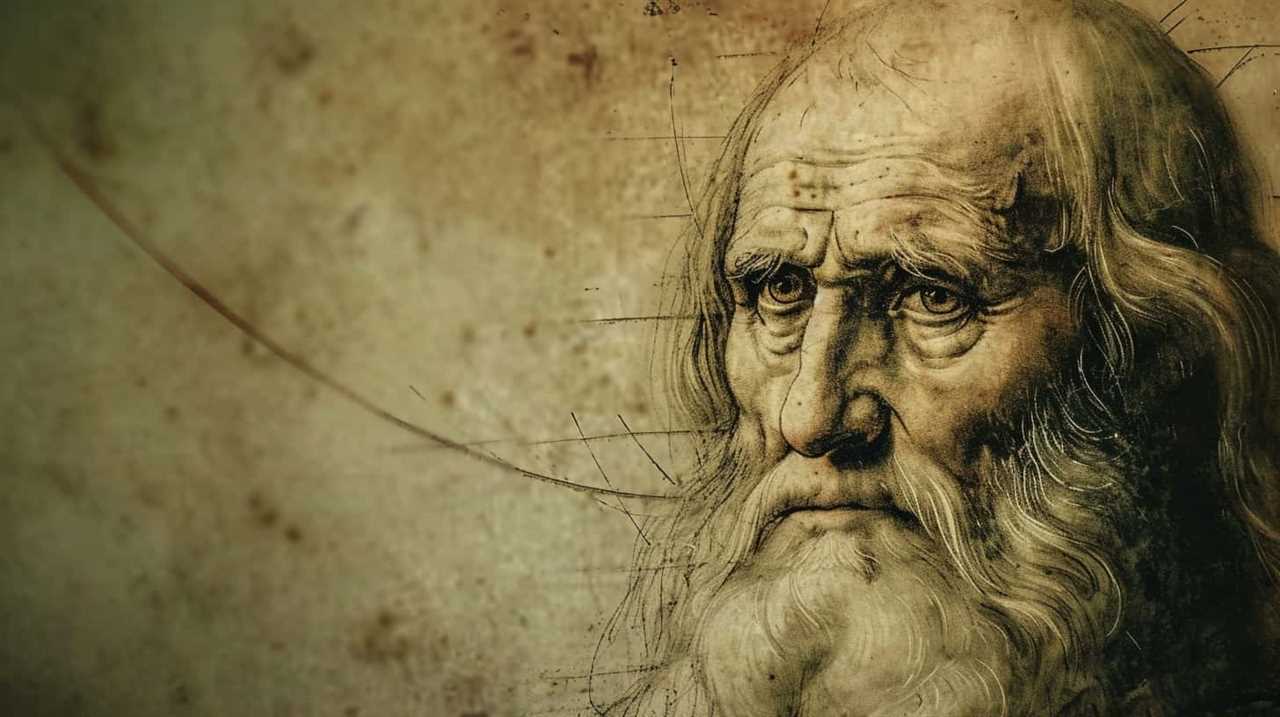
- Art has the ability to inspire us in countless ways. From paintings that depict breathtaking landscapes to sculptures that embody the human form, art has the power to ignite our imagination and spark creativity. It’s through art that we’re able to see the world through a different lens, encouraging us to explore new ideas and push the boundaries of our own creativity.
Art as a medium for cultural exchange:
- Art serves as a universal language that transcends cultural barriers. It allows us to understand and appreciate different cultures, fostering a sense of unity and understanding. Through art, we’re able to gain insight into the values, traditions, and beliefs of diverse communities. Whether it’s through traditional paintings, music, or dance, art provides a platform for cultural exchange and dialogue.
Art as a manifestation of beauty:
- Beauty is subjective, but art has the ability to create a shared experience of what’s aesthetically pleasing. Whether it’s a visually stunning painting or a melodious piece of music, art has the power to elicit a sense of wonder and awe. It allows us to escape the mundane and experience the sublime. Art has the ability to transform the ordinary into something extraordinary, reminding us of the beauty that exists in the world around us.
Art as a Way to Challenge Perceptions
As we delve into the significance of art, it becomes evident that it not only serves as a source of beauty and inspiration, but also as a way to challenge perceptions. Art has the power to challenge societal norms and push the boundaries of what’s considered acceptable or conventional. Renowned creators recognize this ability and utilize it to provoke thought and ignite conversations.
Through their works, artists challenge existing norms by presenting alternative perspectives and questioning established beliefs. They encourage us to question the status quo and view the world from different angles. By challenging our perceptions, art forces us to confront our preconceived notions and biases, opening the door to new ideas and possibilities.
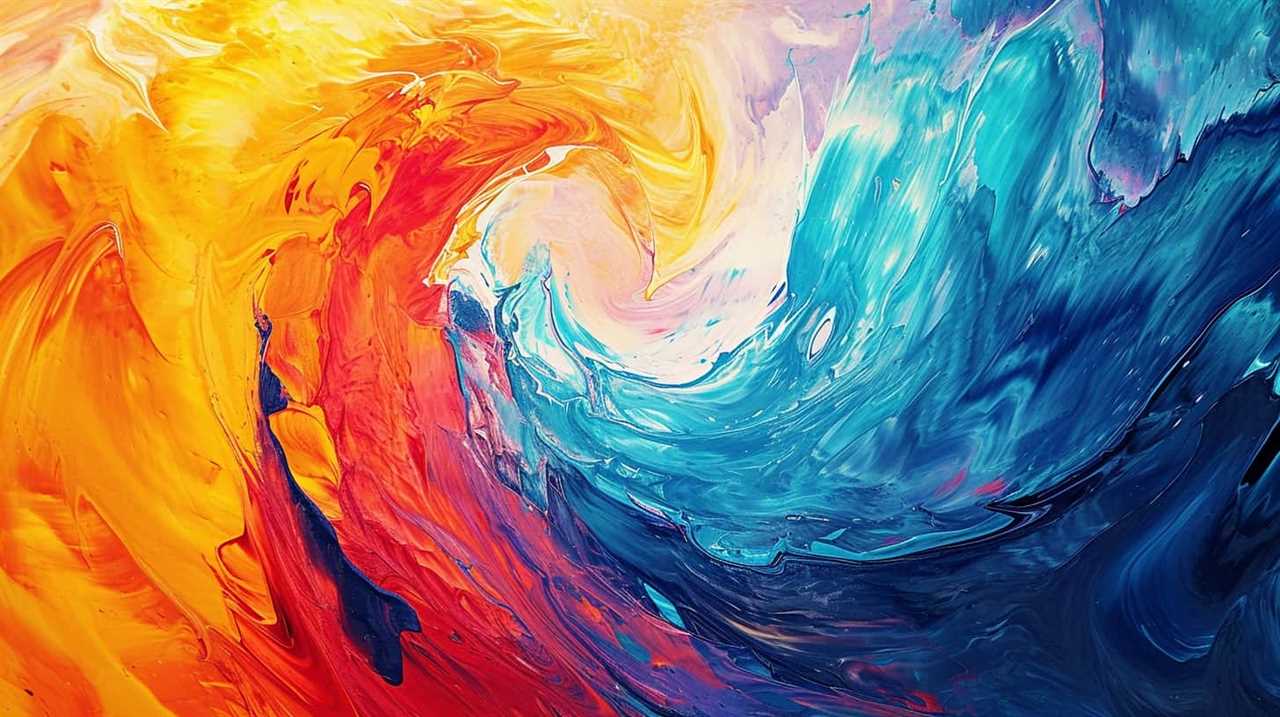
Art has the capacity to challenge our comfort zones and disrupt the familiar. It pushes us out of our intellectual and emotional complacency, urging us to explore and question. It encourages us to challenge our own beliefs and assumptions, fostering a more critical and reflective mindset.
Frequently Asked Questions
How Can Art Challenge Societal Norms and Perceptions?
Art challenges societal norms and perceptions by presenting alternative perspectives and questioning established ideas. Its influence lies in its ability to provoke thought, ignite conversations, and inspire change. Art’s impact can be profound, shaping our understanding of the world and pushing us to question the status quo.
In What Ways Does Art Contribute to Cultural Preservation?
Art contributes to cultural preservation by serving as an educational tool, teaching us about the traditions and values of different cultures. It also allows for cultural expression, giving a voice to marginalized communities and preserving their stories for future generations.
Can Art Be Used as a Form of Therapy for Individuals?
Art therapy offers a transformative journey, harnessing the healing power of creativity. Through self-expression and exploration, individuals find solace, release, and growth. Art becomes a conduit for emotional catharsis, personal discovery, and inner peace.
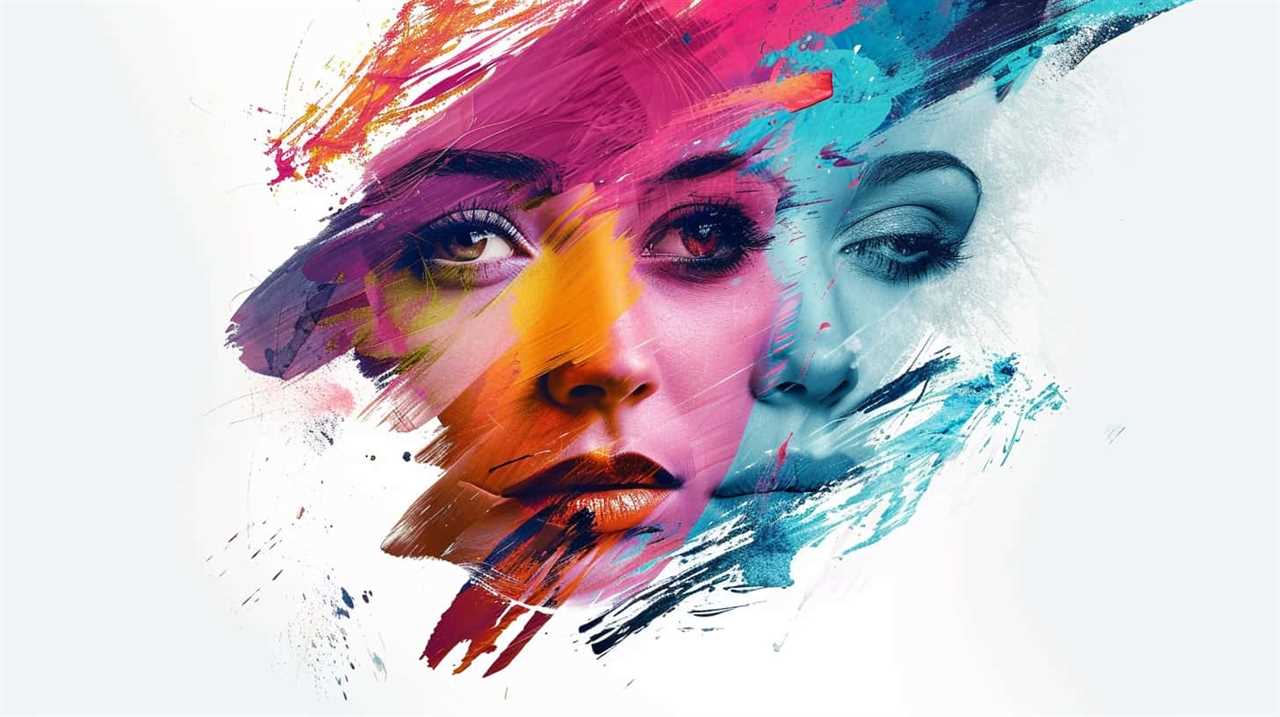
How Does Art Inspire and Motivate Individuals?
Art inspires and motivates individuals by serving as a powerful tool for self-expression. It allows us to convey emotions, thoughts, and experiences in unique and meaningful ways. Additionally, art can act as a catalyst for change, sparking dialogue and challenging societal norms.
What Role Does Art Play in Storytelling and Narrative Creation?
Art plays a vital role in storytelling and narrative creation. Through the power of visual storytelling, it ignites our imagination, transports us to new worlds, and evokes emotions that words alone cannot. It is an essential tool for conveying complex ideas and engaging audiences.
Conclusion
In conclusion, art isn’t just a mere creation, but a powerful force that resonates with our deepest emotions and experiences. It serves as a mirror to society, allowing us to reflect on the world around us and challenge our perceptions.
Through art, we find solace, healing, and personal growth. It connects us on a universal level, transcending language and cultural barriers.
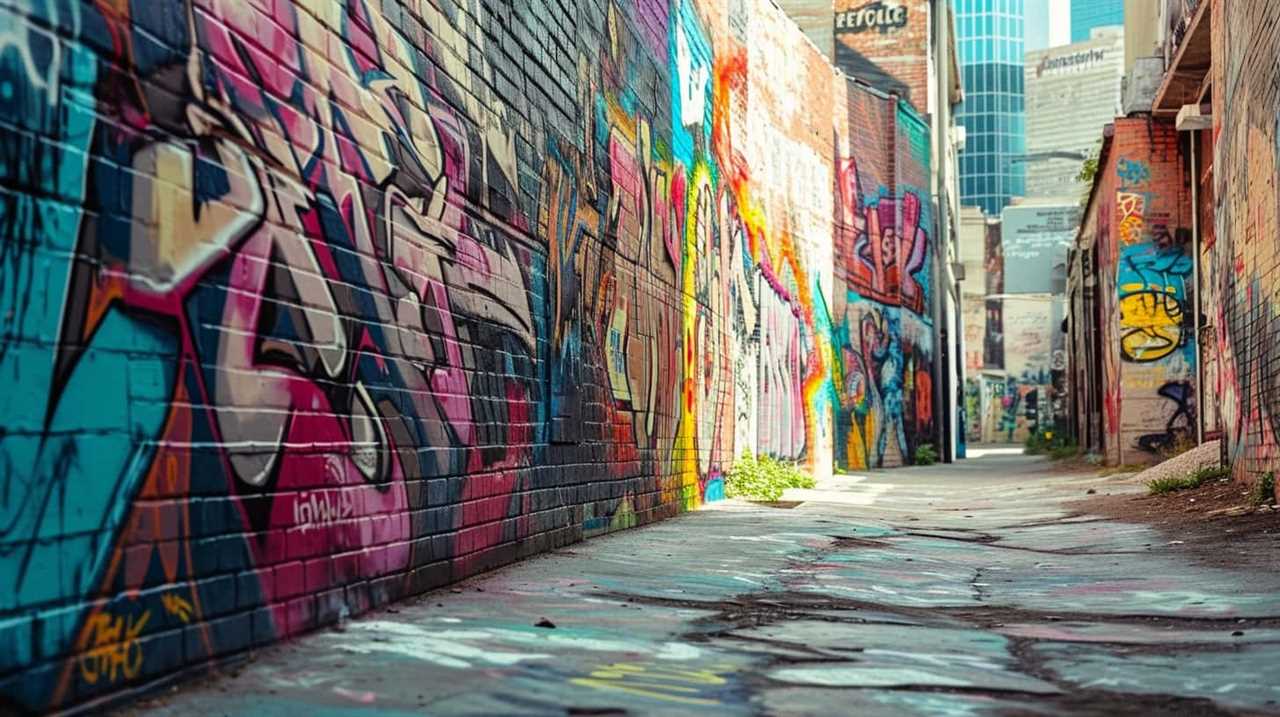
Art matters because it has the ability to inspire change, evoke emotions, and remind us of the beauty and aesthetics that surround us.
Lauren’s talent in writing is matched by her passion for storytelling. Her love for books and deep understanding of culture and entertainment add a distinct flavor to her work. As our media and press contact, Lauren skillfully bridges the gap between afterQuotes and the broader media landscape, bringing our message to a wider audience.
